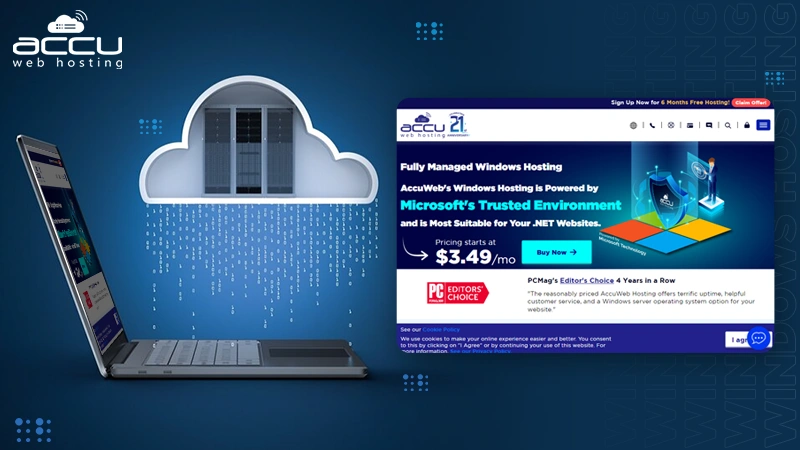Integrating SOC in Your IT Infrastructure

It’s 2024 and the whole world looks like a more digital space than it did a decade ago.
But, with all this quest for a digital world, security has become a pretty major concern for many too.
Today, cyberattacks are becoming more common than you think. Also, learn about Vaçpr Technology with this guide.
You know, in this world, a computer gets hacked every 39 seconds, and every year, over 800,000 such attacks try to cripple online businesses.
So, while big corporations can invest in their own Security Operations Center (SOC), it’s often not the case for any small and medium businesses.
This is where the concept of managed SOC can come in. Let’s go on and explore the world of cybersecurity and see what SOC really is and how you can integrate it into your own IT infrastructure in a hassle-free way.
The Basics of SOC
A Security Operations Center (SOC), also known as an Information Security Operations Center (ISOC), is virtually a team of experts.
They’re equipped with tools and knowledge that go into monitoring and improving an organization’s cybersecurity posture.
In simple words, the Security Operations Center is the central hub where experts vigilantly track, assess, and defend against cyber threats, like malware, phishing, social engineering, DDoS, and password attacks.
To optimize an SOC’s effectiveness, it’s crucial to integrate several key practices. Regular penetration testing and continuous vulnerability assessments help identify vulnerabilities before they can be exploited.
Additionally, employing red teaming services from Bishop Fox can provide a real-world assessment of the organization’s defenses, further strengthening its cybersecurity measures.
Advanced threat intelligence is also essential, enhancing the SOC’s capability to detect and anticipate emerging threats.
The ultimate goal of a SOC, either internal or managed, is simply to keep the organization’s sensitive data and IT infrastructure safe.
The team uses a mix of technology and expertise to spot potential security incidents and mitigate them.
Of course, if you’re running a local business with a negligible online presence, you don’t need a dedicated Security Operations Center.
But if you’re planning on developing your presence while growing an audience, it becomes an absolute must.
DID YOU KNOW?
More than 56% of large companies receive over 1,000 security alerts per day. Nearly all organizations (99%) reported that alert volume is creating problems for the IT security team, and 93% are unable to address all alerts on the same day.
Managed SOC The Savior of Small Businesses
We’ve already established the fact that not all enterprises have the resources to develop an in-house Security Operations Center.
Without a dedicated team, these businesses might miss subtle signs of digital danger, which leaves them vulnerable to data breaches and cyberattacks.
As days go by, the risk factor is only increasing as the cyber threats grow more sophisticated.
Thankfully, France-based managed service SOC provider Exeo can step in to fill this gap. There are plenty of other providers as well!
As the name suggests, it gives the companies a team of cybersecurity experts who work remotely but are just as dedicated to protecting the company’s digital assets.
This external team brings in advanced tools and deep expertise to ensure 24/7 monitoring and rapid response to any security incidents.
Needless to say, this is a game-changer for companies without their own SOC.
For a fraction of the cost of having an in-house Security Operations Center, businesses can have the peace of mind that they won’t wake up to a compromised system someday.
How to Integrate SOC in Your IT Infrastructure
Not sure how to pick a managed Security Operations Center for your company’s needs? Try Exeo.
But if you want to dig deeper, we recommend the following:
Assess Your Needs First
The first step in integrating a SOC into the IT infrastructure is a thorough assessment and planning phase.
This is where you take stock of the present cybersecurity posture, which might very well be non-existent.
This phase involves assessing the existing security measures and the specific risks the company faces, as well as identifying any gaps in your defenses.
Don’t think of it as a generic technical review, as it’s supposed to align security needs with your business objectives.
Plan Your Move
The planning comes after the assessment and it’s also necessary.
In this phase, you’ll decide the scope of the Security Operations Center’s responsibilities and how it will integrate with the current IT systems.
This includes figuring out what security incident responses the SOC will handle and how they will communicate with your team.
Thankfully, most managed SOCs will offer a consultation before settling on a package
This is comparable to drawing the blueprint before you start building a house. You need to know what goes where and what purpose it serves.
This structured approach is vital for seamless integration, as you don’t want your new Security Operations Center to interfere with your existing business operations.
Choosing the Right Managed SOC
- Expertise and Experience: Choose a provider with a proven track record in cybersecurity, as their seasoned expertise means they’re well-equipped to identify and counteract diverse cyber threats.
- Advanced Technology and Tools: Opt for a provider using the latest security technologies, such as EDR, behavioral analytics, AI, blockchain, etc. These technologies allow for more effective detection and response to complex threats. This ensures your business remains safeguarded against evolving cyber risks over the years.
- Compliance and Industry Standards: Apart from having all the expertise and tools, the managed SOC should also comply with all the industry regulations. The purpose is to not only protect against cyber threats but also keep your business clear of legal and regulatory pitfalls.
- Customization and Scalability: Look for customizable and scalable services. This way, it’s possible to change the bill to fit in with your specific needs. This also keeps the line open for future scalability.
- Transparent Reporting and Communication: As you’re dealing with a managed (remote) team of security experts, a provider offering clear, regular communication and reporting is the way to go.
The Ongoing Maintenance and Future Scaling Potential
As you may already know, managing a managed Security Operations Center (SOC) involves a partnership between the business and the SOC provider.
The Security Operations Center team oversees day-to-day operations while continuously monitoring your network for potential threats.
They handle incident responses and try to mitigate risks as soon as they detect them.
This relationship is defined by regular updates and strategic meetings with you to make sure that all your cybersecurity needs are met.
In terms of scalability, a managed SOC offers flexible options. As your business grows, it can expand its services, adding more advanced tools or increasing its monitoring scope.
This scalability is always aligned with business growth. And growth always means more eyes on your business, which also increases the risk factor.

The global Security Operations Center (SOC) market was valued at USD 5.39 billion in 2021 and is expected to grow at a CAGR of 10.2% during the forecast period.
Wrapping Up
With the pace at which technology is going these days, a robust cybersecurity strategy isn’t just a technical necessity for businesses.
It has turned into the cornerstone of business integrity. One of the simplest ways to stay safe is by integrating a managed SOC.
It offers a smart solution for businesses striving to safeguard their digital landscapes but can’t afford to have an in-house team.
Of course, it’s not only about shielding against threats but also about empowering your business with continuous vigilance and expertise.
Embracing a managed SOC service means you’re not just reacting to the cyber threats of today but proactively preparing for the challenges of tomorrow.
It’s a strategic move, placing your business in a position of strength and resilience in a world where cyber security is no longer optional but indispensable.














